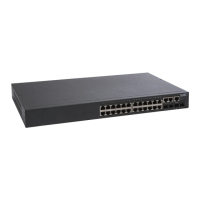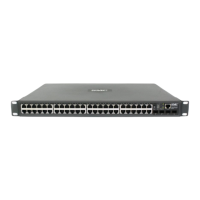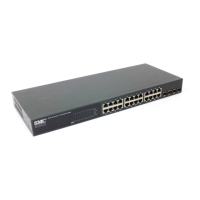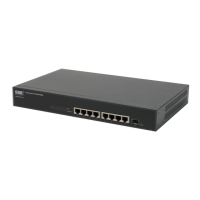W
EB
C
ONFIGURATION
55
SNMP
Simple Network Management Protocol (SNMP) is a communication
protocol designed specifically for managing devices on a network.
Equipment commonly managed with SNMP includes switches, routers
and host computers. SNMP is typically used to configure these devices for
proper operation in a network environment, as well as to monitor them to
evaluate performance or detect potential problems. The switch includes an
onboard SNMP agent that continuously monitors the status of its
hardware, as well as the traffic passing through its ports. A network
management station can access this information using network
management software. Access rights to the onboard agent are controlled
by community strings. To communicate with the switch, the management
station must first submit a valid community string for authentication.
Field Attributes
• SNMP Enabled -Activate or deactivate SNMP.
• SNMP Trap Destination - IP address of the trap manager.
Traps indicating status changes are issued by the switch to specified trap
managers. You must specify trap managers so that key events are
reported by this switch to your management station. SNMP trap
destination specifies the IP address of the trap manager.
• SNMP Read Community - A community string that acts like a
password and permits access to the SNMP protocol. The read
community string specifies read-only access. Authorized management
stations are only able to retrieve MIB objects.
• SNMP Write Community - Specifies read-write access. Authorized
management stations are able to both retrieve and modify MIB objects.
• SNMP Trap Community - Community string sent with the
notification operation.

